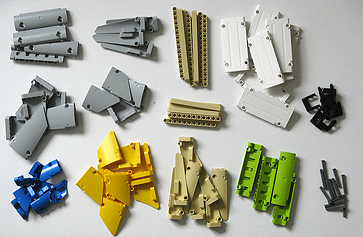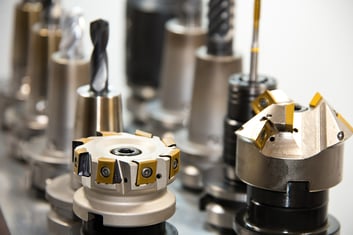Spare parts inventory management is a prime candidate for advanced inventory planning and optimization solutions. With many diverse parts to manage and a lack of power tools, most companies with parts inventories have too many of the wrong parts. The result is unnecessary inventory expense, while still suffering service-limiting stock-outs.
 Manual efforts to improve this situation fail, because of the time-intensive nature of the problem. A large number of parts, each with special considerations, quickly bog down someone trying to improve the parts purchases.
Manual efforts to improve this situation fail, because of the time-intensive nature of the problem. A large number of parts, each with special considerations, quickly bog down someone trying to improve the parts purchases.
Many software suites (ERP systems) come with “inventory management or inventory control” modules. These are not equivalent; they depend very much on the problem area they serve. There is a common need to make sure materials or finished goods are in stock when needed. Each has uncertainties handled by specialized forecasting calculations.
Aftermarket Service
Service covers the maintenance and repair of equipment and machinery. For example, automobiles need routine oil changes and tune-ups as well as repair after accidents or a mechanical failure. Service actions depend upon replacement parts for worn or broken components. Unlike just-in-time manufacturing parts, service parts must be stocked “just-in-case” they are needed. Like retail distribution items, there tend to be a large number of different service parts needed to cover support of many different types of equipment produced over many years. Moreover, these parts are needed in very low quantities. For example, a major car manufacturer reported that over 90% of their service parts have usage rates of less than one unit per month.
Service and Spare Parts Planning Divides into Aftermarket Service and MRO
The term “aftermarket service” applies to the activity of maintaining or enhancing equipment or machinery used by a different organization. “MRO” refers to the same kind of activity but accomplished by the same organization as the one using the equipment.
 Aftermarket Service
Aftermarket Service
Aftermarket service can be performed by the organization selling the equipment to the end user (manufacturer or distributors or retail outlet), or by 3rd party service providers. For example, a Ford car can be serviced by a local Ford dealer or by a local garage or by a franchised muffler, brake, or tire center. In any case, the service organization tries to keep commonly needed parts on hand, while making sure parts with little demand can be obtained quickly when needed from an off-site location. Another class of organization involved with aftermarket parts is the parts distributor. This company sells parts to individuals and service organizations, rather than performing the service that uses the parts.
MRO
The “MRO” acronym has two different spell-outs, depending on the situation. Organizations like electricity utilities and manufacturers with large, complex plants need to keep the facilities in good
repair. This activity is called “Maintenance, Repair, and Operations.” Organizations with fleets of transportation equipment (planes, railroad cars, trucks, or automobiles) need “Maintenance, Repair, and Overhaul” service to keep this equipment in good working order. Common usage refers to the parts used for MRO as “spare parts,” rather than “service parts.”
Inventory Management Objectives
These different types of organizations have somewhat different objectives in their service parts management. In aftermarket service, the primary objective is to fix broken equipment quickly to maintain the customer's confidence for future sales (and continuing service sales). This requires having the parts in stock for the  service action.
service action.
For MRO and some aftermarket service situations with stringent service level agreements, the primary objective is to make sure all critical (also called “essential”) parts needed for the end equipment to operate are on hand. Other parts can be backordered if necessary. For example, a CAT scanner might be sold with a service level agreement to fix any problem within 4 hours so the hospital using it can continue to serve patients. A fuse may be essential for operating the equipment, but the plastic cap on a control box may crack with no loss in function. Hence, the fuse must be stocked locally to assure the 4-hour repair time limit.
Finally, the objective with aftermarket parts distributors is to make sure they maximize profitability of the parts sold. Thus, out-of-stock items, leading to lost sales, should either have a low margin or a low demand.
